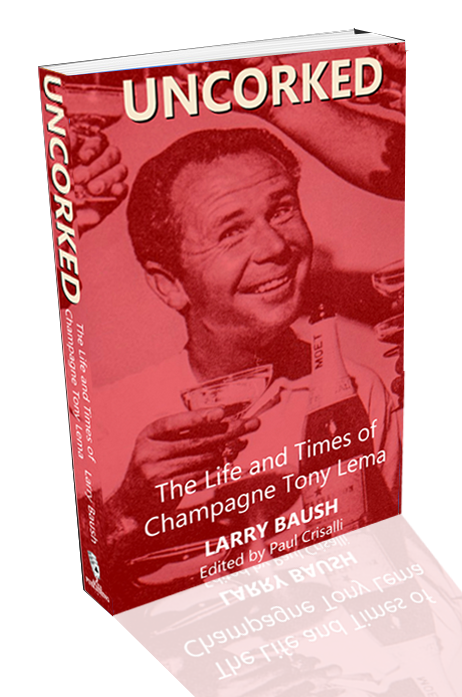How Bob Hope Saved The Desert Classic ⛳
The Birth of the Bob Hope Desert Classic
In 1959 it was apparent that the Thunderbird Invitational Pro Am in Rancho Mirage, CA was on its last legs. There were a number of reasons why the tournament was on life support. The purse was miniscule at $15,000, the members at the Thunderbird Country Club were tired of giving up their access to the course during tournament week, the course was designed for country club members, not touring PGA professionals and it was not an official PGA Tour event because it was a pro am (the same was true of the Crosby and the Sahara at the time).
After Arnold Palmer won the 1959 event in dramatic fashion coming from behind, the most influential golfers in the Cochella Valley came together to see if they could resuscitate the tournament. The group enlisted Bob Roseburg who came up with the unique format of five rounds with a team of amateurs being teamed up with a different pro in each round. Four courses would be used for the event to handle such a large field; Thunderbird Country Club, Tamarisk Country Club, Bermuda Dunes Country Club and Indian Wells Country Club. In the early years the format proved to be very confusing for the pros and amateurs alike and it was dubbed the "IBM tournament" because you needed calculating equipment to figure out which pro you were playing with and on which of the four courses you were to play.
In March of 1959 it was announced that the 1960 event would be the first $100,000 event on the PGA Tour. The winner of the event would pocket $12,000 compared to the $1,500 that Palmer won in 1959. There was also a $50,000 prize offered to any golfer who made a hole-in-one. Soon after the announcement though, a television deal that would have provided more than half the purse amount fell through. The 1960 event lost $65,000.
The tournament board of directors held a big luncheon at the El Mirador Hotel to try to recoup the losses and still provide some funds to the valley's charitable organizations. The enthusiasm at the event convinced them not to end the tournament. Some board members thought what they needed was a celebrity endorsement to make the tournament a success.
Milt Hicks and Ernie Dunlevie were convinced that Bob Hope should be the celebrity to host the tournament as he was a fixture around Palm Springs and the golf scene there. They thought that Hope would attract more celebrities to play in the tournament, as well as more sponsors. When Hicks and Dunlevie serendipitously ended up on a Western Airlines commuter flight from Las Angeles to Palm Springs with Hope, they convinced him to host the 1964 event.
A surprise letter from the IRS claiming the tournament owed $110,000 in back taxes gave Hope cold feet and put a halt to his involvement. Luckily there had been no announcement of the Hope involvement so the tournament was not left with egg on its face. A solution to the tax problem was figured out and Hope was back lending his name to the 1965 event. Jill St. John was the 1965 tournament queen followed by Barbara Eden and Linda Carter.
Dwight D. Eisenhower, another desert golf enthusiast, was on hand to congratulate the winner, Billy Casper. Eisenhower also agreed to lend his name to a new emergency medical facility and the tournament board of directors agreed to donate funds for the project. More than $50 million has been raised for the Eisenhower Medical Center by the golf tournament.
The tournament attracted celebrities who played in the pro am giving the event what we would call a "social presence" today. The fact that Arnold Palmer won the event five times, including his last victory on the PGA Tour in 1973 added to the luster of the event.
History was made in 1995 when the pro-am team of Bill Clinton, George H.W. Bush, Gerald Ford and Bob Hope played with defending champion Scott Hoch. It marked the first time that a sitting president played in a PGA Tour event and probably the first time that three presidents had played golf together.
In 2012 the Bob Hope Desert Classic gave way to the Humana Challenge in a partnership with the Clinton Foundation and reverted back to a four day event. while retaining the pro am aspect. For a golf historian, though, it will always be remembered as the Bob Hope Desert Classic.
This week's vintage ad is the cover from the 1969 Bob Hope Desert Classic program.
We are featuring our first guest post in today's WHAT HOLE IS IT? contest. Send your pictures of your favorite golf holes to larry@9acespublishing.com. If we use your pic, you'll win a prize. Guest posts will run every third Thursday of the month.
Enjoy!
Larry Baush
WHAT HOLE IS IT?

Send us your picture of your favorite hole and if we feature it, you win a 2021 WHAT HOLE IS IT? Wall Calendar.
Email to larry@9acespublishing.com
We'll post guest submissions on the third Thursday of the month starting in January.

2021 WHAT HOLE IS IT?
WALL CALENDAR
$14.95







